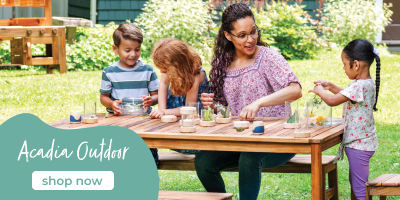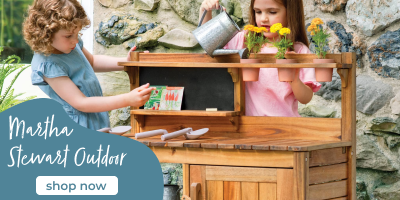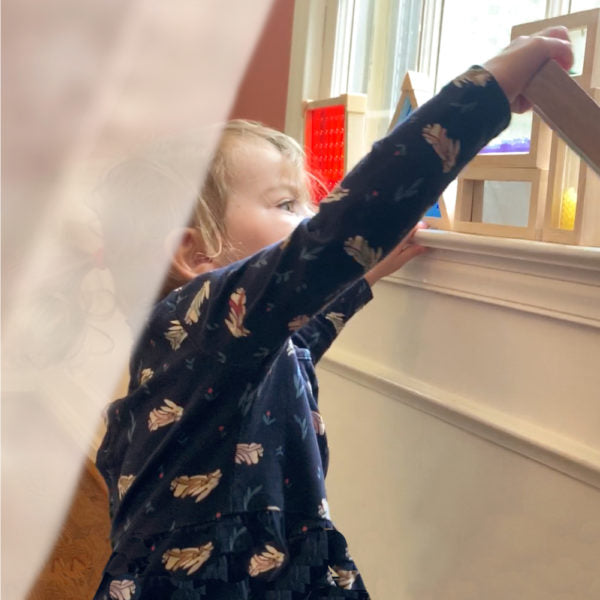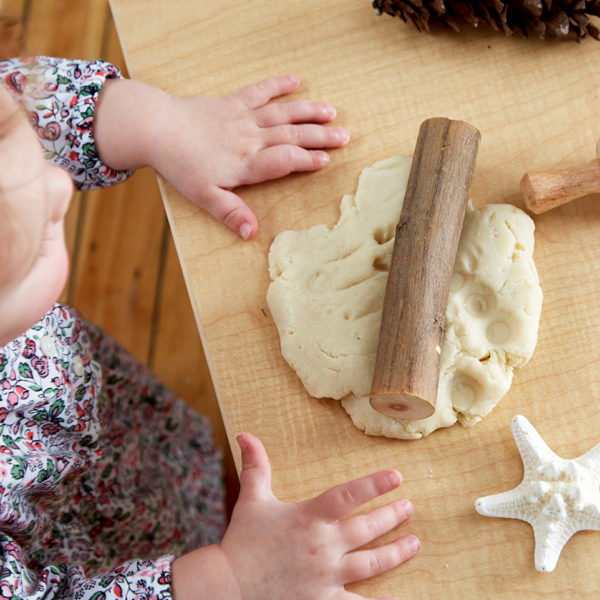How to Bring Back Your Life’s Rhythms: Keeping Hands Busy

The world’s axis is tilted 23.5 degrees from the plane of its orbit around the sun and hasn’t changed significantly in the last 40,000 years. Although the world’s physical tilt is basically the same as it has always been, there’s no denying that our home-life rhythms are definitely tilting at new and different angles. With the onset of Coronavirus, we are living in completely different worlds where families are now working, learning, and keeping busy all together under one roof. The familiar household rhythms and routines of going about our lives has been temporarily disrupted . . . making all of us, especially preschool children, feel a little shaky on our axis.
Their days are suddenly filled with large, inordinate, uninterrupted blocks of time at home. There’s hardly anywhere to go and few places where they can be just plain silly, jump up and down, or run about with the wild abandonment so famously akin to all young children. The shiny plastic toys have lost their luster and even pestering and teasing siblings is getting old. If you are a preschooler, all of this is unsettling and maybe a bit boring. If you are a parent, all of this may be nerve wracking and perhaps a little overwhelming.

Enter Grandma’s Law: Busy Hands are Happy Hands.
My grandmother did a lot of handiwork and kept her hands busy with crocheting and knitting: hats, scarves, mittens, slippers, doilies—you name it, she made it! Her hands were always busy with the repetitive and rhythmic movement of knit . . . purl . . . knit . . . purl. As her hands moved with precise rhythm, she would often say: Busy hands are happy hands!
Grandma isn’t the only one who believes in the importance of busy hands. Occupational therapists, for example, use activities involving hands as a primary form of therapy for children’s issues such as autism and attention deficit hyperactivity disorder (ADHD). Recently, neuroscientists have found that busy hands can positively alter the brain’s chemistry making us feel more productive and responsible, less anxious, and happier.
Although introducing knitting to preschoolers probably isn’t advisable, one simple way to encourage grandma’s mantra of busy hands is with family weaving projects.
The most important element of family weaving projects is understanding the importance of wholeheartedly involving your child in the entire process of the projects—start to finish. Invite your child to join you in searching the kitchen, garage, or backyard for weaving bases and materials. The possibilities are truly endless.

| Weaving Materials | |
| · Strawberry Baskets
· Link Fences/Gates · Baby/Pet Gates · Baking Racks · Y-shaped Twigs · Colanders · Bicycle Wheel |
· Raffia
· Vines · Yarn · Rope · Ribbons · Pipe Cleaners · Wire |

Designate your child as the Master Weaver of the household, which means creating a workplace or artist studio in the home that belongs uniquely to creating weaving masterpieces. Include furniture that is just your child’s size, such as a small table and chairs. Add child-sized shelving for storing the potential weaving bases found around your home. Be sure there are plenty of storage baskets for all the collected weaving materials. Consider selecting a storage shelf that is big enough to handle large weaving bases such as bicycle wheels or hubcaps. Supplement the space with authentic materials gathered easily from nature including pinecones, river rocks, and driftwood or personal artifacts (i.e., photographs, beads, broken/unwanted costume jewelry, feathers, buttons, etc.) for children to add to and enhance their weavings.
Then invite the family’s Master Weaver to conduct weaving sessions for everyone to enjoy. This sends a message of your child’s importance as a valuable and competent member of the household as well as creates new home-life rhythms

















